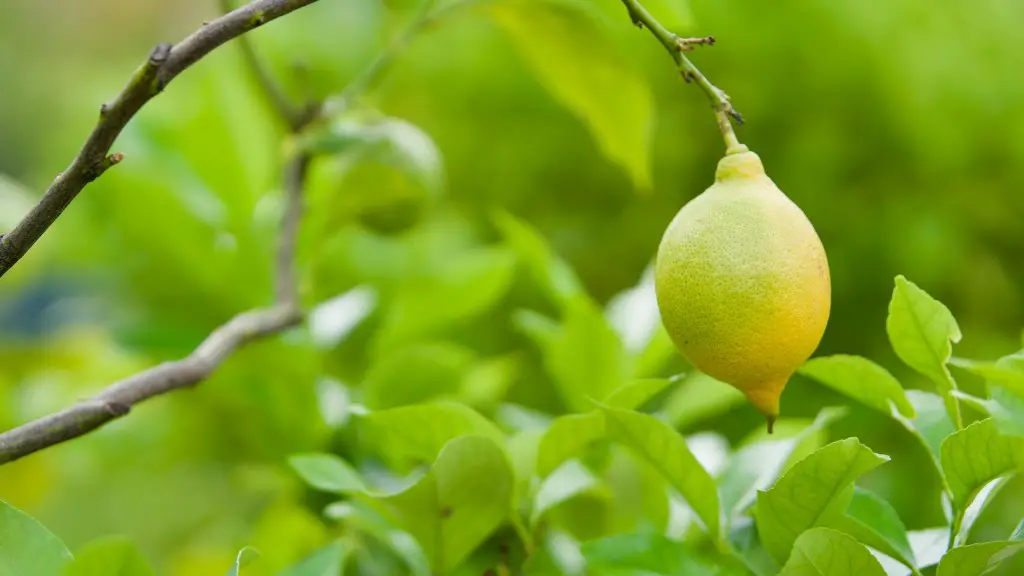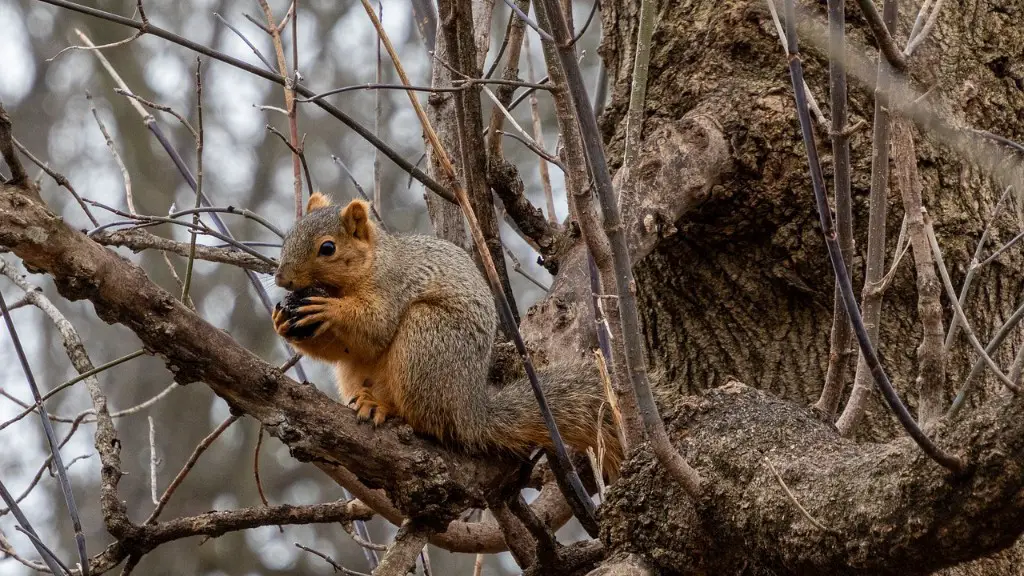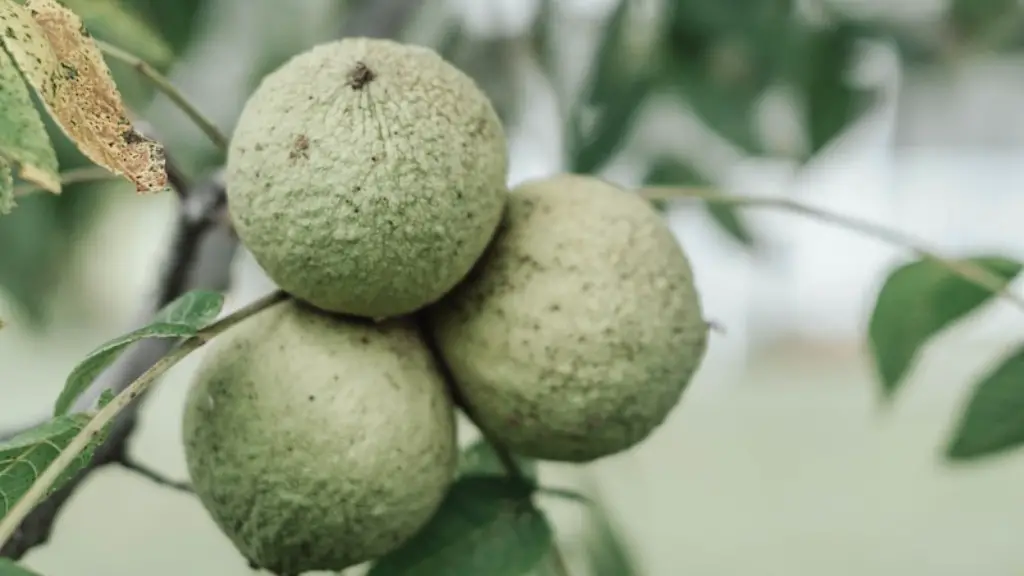Do I need to cover my lemon tree? Before you take action, it’s essential to understand why and when protection becomes necessary. Lemon trees are grown in a variety of climates, with some areas much more sensitive to weather changes than others. If you live in a location prone to cold weather and long winters, a cover can help keep your tree healthy and happy.
When temperatures dip below 30°F, damage to leaves and branches can occur. In cold weather, especially during spring frost, trees such as lemon can suffer loss of blossoms and fruits as well. If this happens, the tree won’t be able to produce fruits – leading to a diminished yield. The amount of cold-damage a lemon tree can take will vary, so it pays to be aware of how much frost your local area sees.
Naturally, the best protection is choosing to plant your tree somewhere with a warmer climate. If that’s not an option, premium fleeces, tunnel cloches, floating row covers, and custom-made frames can all be used as covers when temperatures drop. You should also consider providing shade during mid-summer months to protect your lemon tree from sunshine and scorching temperatures.
It’s also important to note that new lemon trees, especially in their first growing season, must be handled with extra caution. New trees require protection during winter, and can benefit from covers during the summer. Be sure to check with your local gardening store or nursery for specific advice based on your region and variety of tree.
If you’re still unsure whether or not to cover your lemon tree, consult your gardening store or local nursery. They should be able to provide you with advice on the best way to protect your tree. With the right protection and maintenance, you can look forward to a rewarding harvest from your lemon tree for many years to come.
What Type of Cover Is the Best for Lemon Trees?
When selecting a cover for your lemon tree, it’s best to use something lightweight enough to breathe – and non-toxic for the plant. Professional grade covers should be kept in a safe place before and after use, and should be both sunshine and frost resistant. To ensure you’re purchasing the best cover for your lemon tree, be sure to read online reviews or ask your local provider for their advice.
Once you have a cover in hand, you will need to remove it once the temperature rises. Unfortunately, there is no one-size-fits-all answer to this question. If the temperature goes back below 30°F, you will need to cover your tree again to protect it. While it can be inconvenient to continuously move the cover, or keep checking on the temperature, it is essential to keeping your tree healthy.
In some cases, you may need to add extra coverage in extreme weather. For instance, if frost persists from below 25°F, you will need to provide extra protection. If you live in an area prone to late frost and unpredictable temperatures, a double layer of protection can help keep your lemon tree safe.
You should never leave your tree uncovered for too long, as this can damage its health. Make sure to check the temperature of your area every day to avoid leaving your tree uncovered when temperatures dip. Additionally, keep an eye out for new buds and foliage, as young branches are much more sensitive to cold weather and will require more protection.
How to Care for a Lemon Tree During Winter?
In harsher climates, your lemon tree may need help surviving winters. To prepare your tree, start by sheltering it from any wind coming from cooler climates. You can use barriers of bushes, rocks, or walls to protect the tree, and should also consider wrapping and covering it with a full covering or cloche.
During winter months, you will also need to reduce your lemon tree’s water-intake, as excessive water can lead to freezing and root-rot. The tree should receive a minimal amount of water to help it survive, enough to keep its soil moist. In order for your tree to be in the best position possible, it is also critical to give it some fertilizer during the winter months, as this will help ensure the tree has all the necessary minerals and nutrients for its growth.
It’s also important to maintain the soil’s temperature during the winter. While the cover and the insulation layer offer protection to the lemon tree, they don’t necessarily affect the soil’s temperature. If your local area has long winter months and the soil’s temperature is consistently lower than 20°F, it’s worth investing in an insulated covers for the tree’s roots. These specific covers should be installed at the beginning of winter, and can remain throughout the entire season without causing any harm to the tree.
What Are the Consequences of Prolonged Cold Weather?
While some climates are milder and require little to no protection, most lemon trees are prone to freezing and freezing can lead to severe consequences for your tree and fruit yield. In general, when leaves and buds become frostbitten, their range of temperatures can narrow. This can limit the flourishing of the tree, eventually killing it. Additionally, extended exposure to winter temperatures will equal a lesser yield at the end of the season.
It’s worth noting that while the cover may protect against the cold, it doesn’t guarantee a successful harvest. If the temperatures stay consistently low for long periods of time or keep fluctuating, this could disrupt the tree’s development and growth, leading to a reduced harvest. In terms of the actual fruit, freezing could destroy the flavor of the lemons.
Protecting your lemon tree from cold winter weather should be one of your top priorities. With the right protective solutions, your lemon tree should remain healthy and productive for many years to come.
How Can I Keep My Lemon Tree Warmer in Cold Weather?
When it comes to keeping your lemon tree warmer in cold weather, there are a few different solutions. The most obvious is that of a protective cover like the ones discussed in the previous section. Although covers protect against temperature drops and snow, they don’t necessarily provide warmth. Therefore, when investing in a cover it’s important to choose one that’s specifically designed to keep your lemon tree warm in winter months.
One other solution is to create an insulated shelter around your lemon tree. Temporary or permanent shelters can be placed around a lemon tree to keep it warm during colder months. Both coal and wood-burning fire pits can also provide effective warmth and help protect your lemon tree during winter. During the summer months when temperatures reach a high point, you can block the sun’s rays with a simple tarp.
Finally, depending on the size of your space, it may be worth investing in a small greenhouse. Greenhouses help regulate the temperature for lemon trees – no matter the season. To be able to keep the temperature stable even during colder months, you should opt for portable heating units such as propane heaters and space heaters. These should be kept in the greenhouse to ensure your lemon tree is consistently warm and healthy.
What Are Other Protective Solutions for a Lemon Tree?
As mentioned previously, the best protection for your lemon tree depends on your location and the type of cold weather it is subjected to. However, there are a few additional protective solutions that can help keep your lemon tree safe. One protective solution is to insulate the roots of your lemon tree, as keeping them warm can make all the difference during harsh winter months. To do this, you can add additional layers of straw, compost, or soil around its roots.
If the tree is located in an area that’s prone to strong winds, you should also cover it with plastic or contact paper. These materials provide protection against snow, rain, and wind, while also helping to keep the lemon tree warm. It’s also important to consider the type of soil your tree is planted in. A thick layer of compost or topsoil on top of the tree can help keep the temperature stable in winter months.
Finally, it may also be necessary to add extra fertilizer to the tree before winter. Adding organic fertilizers such as well-aged cow manure will help maintain the fertility of the soil and will also provide insulation for the roots. Fertilizers with high nitrogen content are also recommended to ensure the tree is healthy when it comes to the bloom and fruit ripening period.




